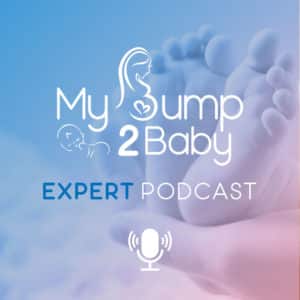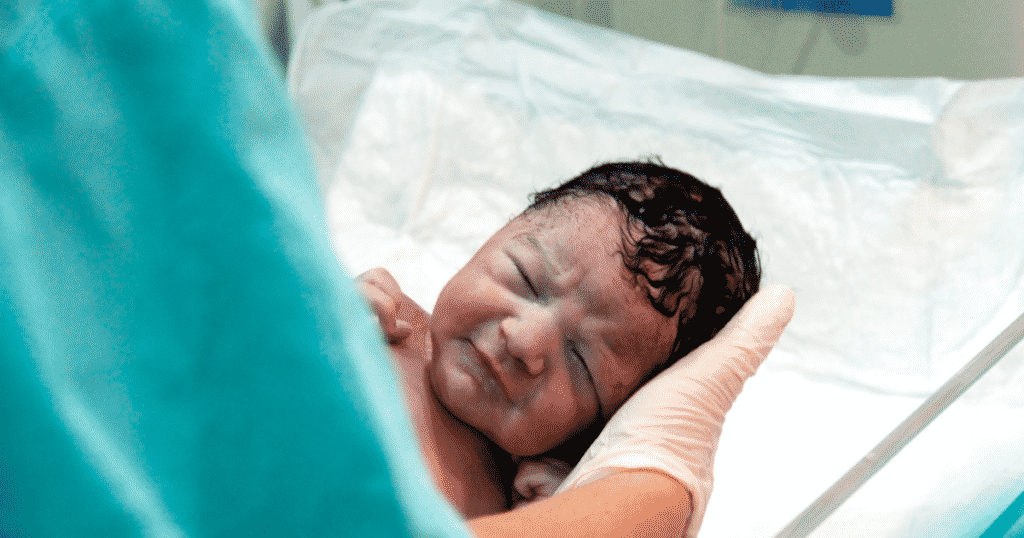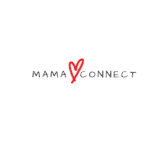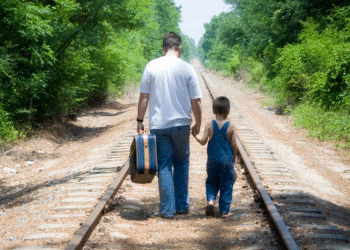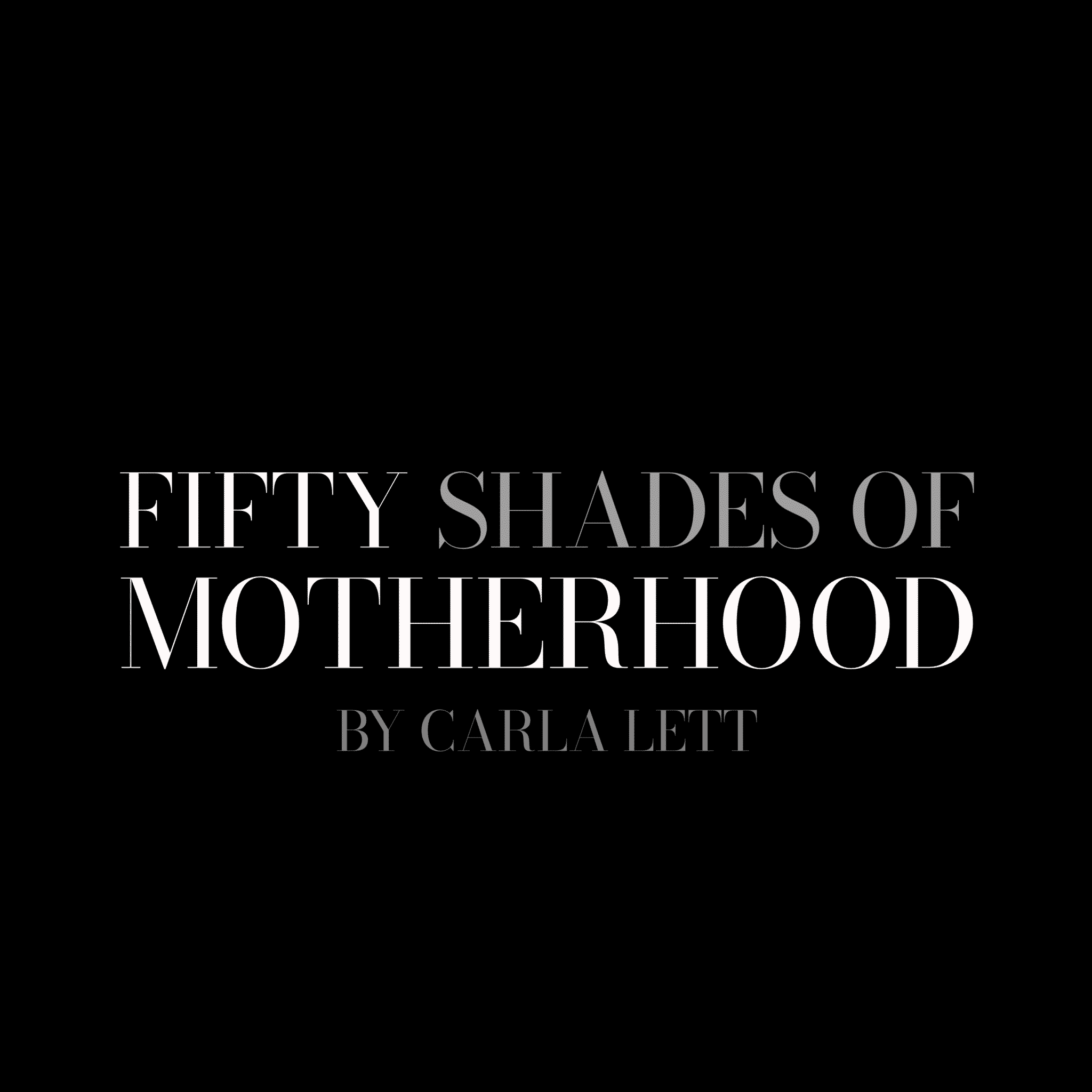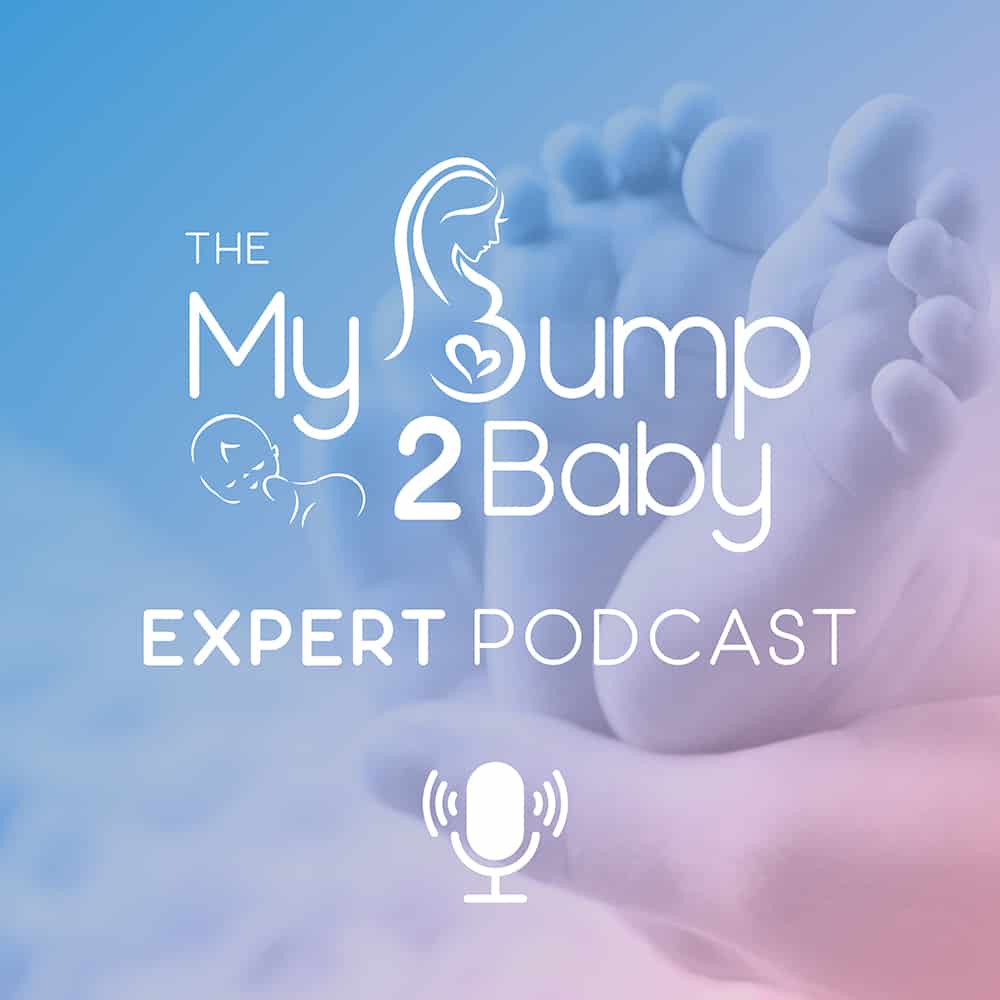- Everything you need to know about the Newborn Golden Hour
Today we speak to Alice West from Mama Connect all about the long awaited newborn golden hour and Alice also discusses many of the questions we all have about newborns. Alice answers commonly asked questions that many expectant parents have around newborns. In this episode Alice covers, What is the newborn golden hour What the benefits are of bonding straight after birth and skin to skin, what the different options are for the umbilical cord, what a newborn will look like, newborn tests, what the vitamin k injection is, what to expect from your first newborn nappy, how do to handle and clothe a newborn for the first time, tips for changing the nappy for boys and tips for changing the nappy for girls. What top and tail washing is, tips on bathing your baby, different cues you should look for, car safety guidance and basic swaddling advice.
Here are Mama Connect’s Social Links:
Carla: [00:00:00] Hello and welcome to my bump to baby expert podcast, where we bring experts from all over the UK to answer your questions on everything, pregnancy to preschool.
[00:00:34] Today we have special guest, Alice West from Womb 2 World answering all your questions around the newborn golden hour. I hope you enjoy it.
[00:00:50] Hello, and welcome to my bump to baby expert podcast. Today we have the lovely Alice West from Womb 2 World talking to us all about those newborn questions. hat you may not be aware of. So hello, Alice and welcome to the podcast.
Alice: [00:01:10] Hi, Carla, how are you?
Carla: [00:01:12] I’m very well, thank you. It’s lovely to have you on here.
Alice: [00:01:15] Thank you so much.
Carla: [00:01:17] So today we’re going to be covering all these commonly asked questions that parents have around newborns. So, um, let’s start with what is the golden hour Alice?
Alice: [00:01:30] Okay, so this is the hour after birth. It’s referred to by some as the golden hour. So straight after birthing, baby oxytocin is working in overdrive at this time to promote bonding between mother and baby. Skin to skin contact helps baby calm down and regulates their own heartbeat, breathing and temperature.
[00:01:54] So research has actually shown that breastfeeding within the first hour prolongs the duration of exclusive breastfeeding. To make the most of the opportunity at this point, the mother should be kept warm and feeling secure, maintaining a quiet environment to imitate womb like states and mum and baby should not be separated.
[00:02:14] Some babies will need some medical attention after birth. So don’t worry. There will be other opportunities to bond too.
Carla: [00:02:22] Excellent. Excellent. Thank you. And what are the benefits of it bonding straight after birth and skin too skin?
Alice: [00:02:30] Okay. So bonding is the intense attachment that parents and baby have for each other. Um, the hormone dopamine helps the baby attach emotionally to its parents. So some but not all parents feel a deep attachment straight after birth. The hormone oxytocin released during pregnancy, labor, and immediately after birth gives parents a powerful feeling of euphoria and love after their baby is born. For other parents, feelings of attachment, take a little longer to develop, and that’s totally okay.
[00:03:03] Newborn babies bond through touch and smell, um, the benefits of skin to skin immediately after birth. Is the baby’s temperature is more stable. A baby’s heart and breathing rates are more stable and baby’s blood sugar is more elevated. Um, skin to skin literally relieves a baby of physical stress. It helps to stabilise their body temperature., heart rate and stress hormones, and stimulates the release of oxytocin, which is the love and bonding hormone. Um, some examples of skin to skin with baby could be sharing a bath together. It’s a great way of getting the skin to skin or even joining a massage group to learn some lovely massage strokes for use for your skin to skin time.
Carla: [00:03:49] Excellent.
Alice: [00:03:50] And
Carla: [00:03:51] do we have options when it comes to the umbilical cord?
Alice: [00:03:56] Yes. So the first option is delayed cord clamping. So this means to delay the medical intervention of clamping, the umbilical cord at birth. It refers to clamping the cord once it has stopped pulsating or after the placenta has been delivered. Why should we wait? Well it allows vital STEM cells to be transferred to the baby, it lowers the risk of iron deficiency, it allows mum and baby to be connected for longer. Easing the transition for both. It allows increased levels of iron, lowers the risk of anaemia in newborns. If you wish for baby’s cord not to be clamped immediately after birth, you should inform your birth partner and midwife or other medical staff.
[00:04:41] This can be recorded in your birth plan. The next option is a Lotus birth. So basically means giving them the umbilical cord uncut. So baby remains attached to the placenta and until it all naturally detaches. Many see this as a more natural period of transition for baby, allowing them to gently let go of their mother’s body in their own time.
[00:05:05] It’s not a common practice. There are many sources of information or reference for Lotus birth online. Um, you can have a look at lotusfertility.com. Um, for more information on that.
Carla: [00:05:18] Excellent. What can I expect my new born to look like?
Alice: [00:05:24] Okay. So baby’s head, may look a little bit misshapen resulting of normal molding that happens as baby descends through the pelvis and birth canal within a day or two, it naturally takes on a rounder shape on its own and the soft spots, which is the top of the head. Um, this is where the skull bones have not yet come together. A baby’s skin may be covered in vernix or waxy white substance. A baby’s eyes may appear cross eyed this is normal at birth babies, eyes and eye muscles are learning to function in response to light and movement. A babies, a baby boy scrotum may look relatively large, and baby girls often have swollen labia and breast tissue. It’s all normal effects of pregnancy hormones, and won’t stay this way.
Carla: [00:06:15] Excellent. Thank you for that. And what are the initial newborn tests?
Alice: [00:06:21] Okay. So you get your Apgar score, which parents will be offered a few tests and examinations for the newborn in the first few hours of his life. So the first is Apgar score. Midwife will record this at one minute and then five minutes. It’s a noninvasive check by watching newborns colour , breathing behaviour, activity and posture. Then you get your physical examinations. Its babies will normally be offered two physical examinations. The first examination is within 72 hours of birth.
[00:06:54] Then again at about six weeks, they conduct a full uh, physical examination from head to toe, and then you get your hearing tests. So babies are offered hearing tests within the first couple of days of birth. This involves placing an earpiece in baby’s outer ear and sending clicking noises into the ear. The taste is short and results are available straight away.
[00:07:17] Then you get your heel prick test, which has done before baby’s a week old. They basically take a little, a tiny amount of blood from babies heel. This blood sample will be tested for enzyme deficiency, cystic fibrosis, sickle cell disease and thyroid deficiency. Then the last one is you get your post natal check, which is the next screening that mum and baby are offered, um, with the doctor around six to eight weeks.
[00:07:44] And this gives the family doctor the chance to make sure everything is fine with mum and baby. Doctor will check the baby’s growing healthily and the doctor may check mum’s blood pressure and feel her tummy to make sure the uterus has contracted down properly.
Carla: [00:07:59] That’s excellent. And what is the vitamin K injection?
Alice: [00:08:04] Okay. So one of the first medical decisions was which parents are offered for their baby. It’s the vitamin K plays an important part in making our blood clot. So small numbers of babies, about one in 10,000, have vitamin K deficiency bleeding. These babies don’t have enough vitamin K if baby doesn’t have enough, you may spontaneously bruise or bleed.
[00:08:26] The two ways of administering vitamin K by injection or by mouth. So in the injection is a single injections short, shortly after birth. If baby is breastfed, parents can opt for three doses of vitamin K by the mouth. Two are given during the first week of life. And another one when the baby is one month old, if the baby is bottle fed, parents can opt for two doses by the mouth during the first week.
Carla: [00:08:52] Excellent. What can I expect from the first nappy?
Alice: [00:08:57] So baby’s first nappy is likely to be filled with meconium, which is a baby’s first poo, which is very black and sticky. It can be difficult to clean off, but these kinds of poos only happen once or twice at the start.
Carla: [00:09:10] And how do I handle and clothe my baby for the first time?
Alice: [00:09:14] So handling baby. So remembering to support the head and neck, um, if holding baby over your shoulder, you still need to support their neck in case the baby throws themselves backwards, which is common. Benefits of holding baby is calming for both of you and baby and creating that bonding with baby. Can a parents spoil the baby with too many cuddles?
[00:09:36] I get asked this a lot. Most definitely not. If you want to hold your baby often, then do. There’s great benefits to us. But at the same time, don’t feel forced into having to hold your baby all the time. It’s perfectly okay to put them down somewhere safe for a break. Clothing your baby, one of the first things parents will do is dress baby. Remember there’s no rush to clothe baby. You can enjoy as much skin to skin time as you want. Just remember to pull clothes, not limbs. Dress baby in layers. Make it easy when out and about for change in temperature, they may go through around four plus outfits every day. Uh, the buttons on the neckline of babies vests and tops makes it easier to get over their head and the poppers on the legs make a nappy change easier without taking off the whole outfit.
Carla: [00:10:28] They’re very good tip. Very good tips indeed. So any tips on nappy changing for boys and girls?
Alice: [00:10:36] Okay. So newborns don’t always enjoy having their nappy changed, keep them warm and secure as possible during it. And they will get used to it. With girls wipe from front to back to prevent infection. Parents of girls may see their daughter having a little period or white discharge after birth, this passes. And it’s due to hormones. Be aware that in boys, it’s not recommended to pull back the foreskin to clean beneath as it can tear the skin. Do not change baby on a raised surface in case of baby rolling off. And if you concerned about anything at all, just call the doctor or, um, your health visitor.
Carla: [00:11:16] Okay, great. What is top and tail washing?
Alice: [00:11:20] Okay. So top and tail washing is also great in the early days while parents are getting used to handling baby, as you can just lie them on a towel to wash them. So top and tail washing allows the cord to dry out too. Always check water, temperature, and make sure to keep baby warm in the towel.
Carla: [00:11:38] Any advice you can share on preparing a bath for baby?
Alice: [00:11:43] Okay. So, um, how you can test the water temperature is you can use a bath thermometer or your elbow. Uh, you can use either a baby bath, a normal bath or a sink. Uh, never add water when baby is in the bath as it can change and scold them very quickly. Um, always lower the babies, um, legs in first, never leave baby unattended in a bath. Even if they in a bath seat. Use cotton wool or a cloth or a baby sponge to wash baby and warm waters enough to clean baby. But if you want to use a wash important to check the ingredients as many have chemicals in which, um, may irritate the skin and when washing and drying baby pay attention to the folds of the skin around the thighs and the neck.
Carla: [00:12:34] Excellent. And what are the different baby cues that I should be looking out for?
Alice: [00:12:41] Okay. So the engaging cues is shown by a baby as smiling, looking at the parent’s face, open, relaxed posture, and their eyes are wide, bright and focused. The disengaging cues is when baby has had enough, their interaction, enough interaction, and they want to break. So it’s frowning, lower lip, quivers fussiness. Pulling the body away and looking away, um. Hunger cues, so baby wants some food. They have clenched fingers and fists over their chest and their tummy. Um, they’re rooting, crying. Baby will often use feeding or sucking as a comfort measure when they’re feeling anxious.
[00:13:23] So this is basic reassurance needed from baby, and there’s no harm in allowing baby to have the reassurance that might be through breastfeeding or using a dummy.
Carla: [00:13:33] And can you give me some car safety guidance?
Alice: [00:13:37] Yes. So parents should avoid traveling in cars with preterm and very young babies for long distances. On longer journeys give your baby regular breaks. And if possible, have an adult sit with baby in the back of the car. Or use a mirror, so you’re able to keep an eye on them. If a baby changes its position or slams forward, then parents should immediately stop and take the baby out to the car seats and reposition it. We advise the baby should be taken out of a car seat when they’re not traveling and they shouldn’t sleep in a car seat for longer periods of time.
Carla: [00:14:11] Excellent. And what is the basic swaddling safety advice?
Alice: [00:14:16] Okay. So babies love containment, which all relates back to pregnancy. So if you want a little break from all the holdings, swaddling is a great alternative. So babies still feel contained, but mum or dad can get, um, both their hands back for a little while. So the basic swaddling safety advice would be if you decide to adopt swaddling .Swaddle for each day and night sleep, never swaddled over baby’s face or neck, make sure your baby does not overheat. Always place baby to sleep on his back, do not swaddle tightly across the chest. Do not swaddle tightly around the hips and legs. His legs should be free to froggy up into a typical newborn position and then stop swaddling baby when they become mobile or they can roll. And finally, just remember to explore your options, trust your instincts, your baby, your family, and just remembered it’s all your choice.
Carla: [00:15:12] Excellent. Alice. That was amazing. I absolutely loved that so much information. Thank you.
Alice: [00:15:19] Thank you for having me.
Carla: [00:15:20] Thank you. And can you tell us where parents will be able to find you Alice?
Alice: [00:15:24] Yes. Sure. So you can find us on our website, which is www.womb2world. co.uk. And you can also find us on Facebook, which is just Womb 2 World.
Carla: [00:15:39] Brilliant. And we’ll put all those links in the show notes. So if you want to get in touch with Alice, she’ll be able to do that that way. Um, Alice, thank you so much for coming on.
Alice: [00:15:47] Thank you. I really, really appreciate it, it was great.
Carla: [00:15:56] Thank you for listening to my bump to babies expert podcast. If you would like to find help and support from experts in your local area. Head over to www.mybump2baby.com. And you will also be able to find local pregnancy to preschool groups, classes, businesses, and services in your local area.
[00:16:30] This podcast is sponsored by my bump to baby family protection and legal directory. Being a parent is such a minefield. It’s so difficult deciding who to select when it comes to financial advice or family law solicitors. My bump to baby works with one trusted financial advisor and one trusted family law, solicitor in each town throughout the whole of the UK to find your nearest advisor. Or family law, solicitor, head over to www.mybumpt2baby.com/familyprotectionlegal.

